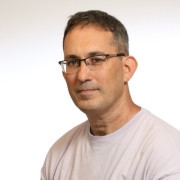Our lab will focus on gene therapy using viral vectors. We will tackle diseases ranging from cancer to viral infections and diabetes. Devising safe and efficient gene therapies combines challenges in biochemistry and molecular biology with challenges in physiology, immunology, virology and more. We will focus on genome editing- the site specific manipulation of the genome. In particular, we will use viral vectors not only to deliver DNA to the desired cells but also to facilitate gene targeting into a desired locus. We will study the mechanism of gene targeting in order to better manipulate it for our therapeutic cause. The lab will explore the following directions:
- Cancer immunotherapy: Gene targeting of chimeric antigen receptors (CARs)
- Fighting Pathogenic infections: Gene targeting of broadly neutralizing antibodies
- Curing diabetes: Gene targeting for transdifferentiation and immune evasion
- Elucidating the mechanism of gene targeting using viral vectors
- Devising methods to increase the rate of gene targeting by homologous recombination
The approach
Our lab will use Adeno Associated Viral Vectors (AAV) to facilitate gene targeting ex vivo and in vivo. AAV is a non-pathogenic ssDNA virus. The vectors we will engineer will have a viral capsid in order to target the tissue of choice. However, the engineered vectors will encode no viral genes. Instead they will encode a therpaeutic gene flanked by homology arms or signals for site specific integration. In order to avoid oncogene activation by off target integration, our vectors will encode no promoter. Instead, the therapeutic gene will be expressed from an endogenous promoter upon on-target integration. We have previously shown that AAV can promote therapeutic levels of promoterless gene targeting in vivo without requiring the use of nucle ases.
Innovations and Achievments
- First therapeutic gene targeting independent of nucleases.
- We were able to cure hemophilia B mice from the bleeding diathesis
- We rescued mice with Crigler Najjar syndrome from death induced by hyperbilirubinemia
- We reduced the acidemia and allowed weight gain in mice with methyl malonic acidemia
- We have initial results of HIV prophylaxis in immune humanized mice






